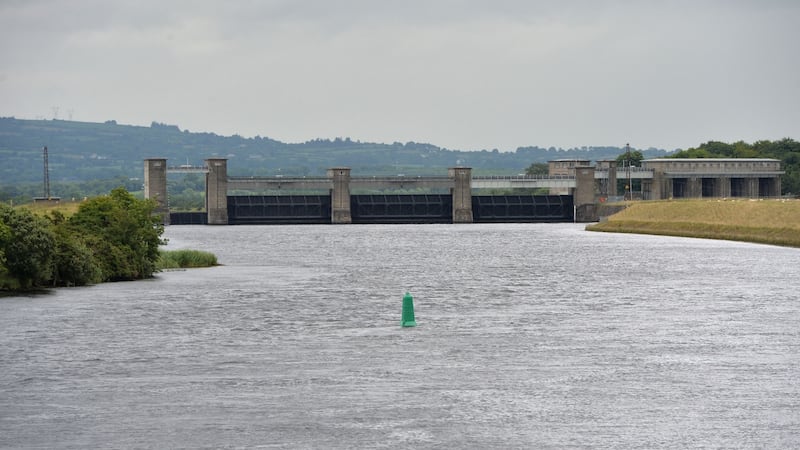Seán FitzPatrick was on holiday in the south of France on July 9th, 2008, when, just before lunch, he received a call from David Drumm.
For the previous 10 months, Anglo Irish Bank had been grappling with a crisis ignited by the discovery, in September 2007, that the businessman Seán Quinn held a 24 per cent stake in the bank through contracts for difference (CFDs) – high-risk investment tools that involve betting on the performance of a share.
Anglo feared Quinn’s holding was destabilising the bank’s share price and worried that a disorderly unwind of the position would cause huge damage to the bank and the wider Irish financial system. The efforts to unwind the Quinn stake had grown increasingly frantic after St Patrick’s Day 2008, when – in what subsequently became known as the St Patrick’s Day Massacre – the Anglo share price fell 20 per cent in a single day.
In the Anglo board room, there were concerns there could be a run on the bank. Various schemes had been attempted, but so far none had succeeded.
By July 2008, Anglo was flashing red. It had lent so much money to Quinn to cover his “margin calls” – deposit top-ups demanded by his CFD providers to make up for his losses on Anglo’s share price – that the bank was reaching the limit of its permitted lending to one customer. The financial regulator’s office, meanwhile, was putting pressure on the bank to deal with the Quinn situation.
On the phone call to France, according to an interview FitzPatrick later gave to gardaí, Drumm – then Anglo’s chief executive – told FitzPatrick a plan had been devised to unwind the Quinn stake for good. The plan involved 10 individuals who would each buy a tranche of the bank’s shares. There would be some lending from Anglo for this.
FitzPatrick said Drumm told him the regulator would be “very happy” with the deal; overall, FitzPatrick thought it was “kosher” and “above board”. FitzPatrick told gardaí he asked Drumm if the investors were “people of substance”, whether they were good for it, and was told they were.
According to FitzPatrick’s statement to gardaí, he was not told the names of the individuals – subsequently known as the Maple 10 – whose identities Drumm was keeping tight. Nor was he told of the terms of the lending.
In his closing speech to the jury, Michael O’Higgins SC, representing FitzPatrick, said it was “absolutely clear” on the evidence that his client didn’t know anything about the limited recourse of 25 per cent on the loans. FitzPatrick thought the lending was at 100 per cent, he said, and a number of witnesses gave evidence which tended to support this. In any case, O’Higgins argued, there was no evidence that the recourse had even been settled on at the time of the Drumm-FitzPatrick phone call. As for whether FitzPatrick should have made more effort to press Drumm on the detail, O’Higgins argued that there was a duty on Drumm, as the executive director who was dealing with the transaction, to inform.
“You start out by saying two people are equal, but then one’s a chief executive officer of the company, the other is a non-executive director chairman. That skews the balance. They’re not equal,” O’Higgins told the jury. A second “imbalance” was that one person had the information and the other person didn’t.
“There’s a sea of detail in this case, but there’s a very small rock pool of it which relates to Mr Fitzpatrick,” O’Higgins told the jury. FitzPatrick was at the Ardboyne Hotel in Co Meath on September 11th, 2007, when Seán Quinn first revealed the size of his huge bet on the bank. He also attended two meetings with the Quinn side at Buswell’s Hotel in Dublin after St Patrick’s Day, and chaired a series of board meetings in late 2007 and early 2008 where the bank’s directors discussed efforts to resolve the Quinn problem. But the July 9th phone call, Judge Martin Nolan told the jury, was the only knowledge FitzPatrick had of the transaction in the evidence.
In 2008, FitzPatrick was Anglo’s non-executive chairman, having stood down as chief executive in 2004. The trial heard that he had an office at the bank’s head office on St Stephen’s Green in Dublin but that he spent a lot of his time on work connected to his non-executive directorships of a number of other companies. In Garda interviews, he said he was not trying to “detach” himself from the bank to save himself from blame. But he “never had any role in relation to the executive” of the bank.
If he had been interfering in the day-to-day affairs of the company, there would have been “murder”, he told gardaí. O’Higgins said there was not one person who contradicted FitzPatrick’s account of being distant from the day-to-day running of the bank.
“That [Garda interview] was in March 2010. We’re in April 2014 and not one single person has been produced who might contradict it,” he said in court.
Lending up to €60 million each to the Maple 10 was one part of the July 2008 scheme to unwind Quinn’s holding.
The other involved lending €169 million to six members of the Quinn family so that they could purchase another tranche of the bank’s shares outright.
However, there was no evidence at the trial that FitzPatrick was made aware of the lending to the Quinns. When the prosecution closed its case earlier this month, Judge Nolan directed not guilty verdicts on the six charges FitzPatrick originally faced in relation to the Quinn family lending. That left him facing 10 charges relating to the Maple 10 lending.
The relief was clear from FitzPatrick’s reaction in court that day.
A week later – four years after he was first interviewed by gardaí, 11 weeks after the trial began and more than 13 hours after the jury started its deliberations – he was to receive even better news.
















